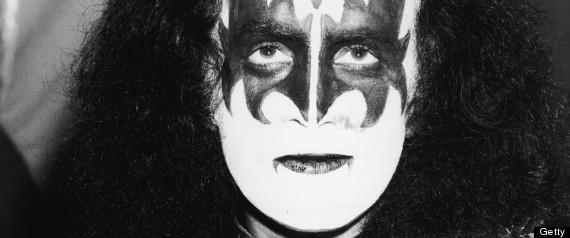Binky Philips | Huffington Post
Binky Philips will be one of the many special guests at the New Jersey KISS Expo on September 28th.
 School year, 1969/1970…
School year, 1969/1970…
There were three guys at the High School of Music & Art in New York City who owned a Gibson guitar, the true no-argument Rolls Royce of guitar companies.
There was me. I had a 1962 SG – style Les Paul.
There was Murray Dabby, the best player of this trio, who owned a 1965 SG Standard, almost the same guitar as mine, just a few years newer.
The third guy had a 1960 Les Paul Special, the model just below mine.
This Gibson connection was a bond.
I grew up to be… what? I don’t even know. A guitarist? A writer? A music biz sleaze ball? All of the above?
Murray grew up to be a full-fledged shrink, doing the good work, in Atlanta.
The third guy was Stan Eisen. He grew up to be Paul Stanley, Starchild, Global Icon.
All three of us still play guitar.
While Murray and I were tight, very much a bro, oddly, it was Stan who I stayed in touch with after graduation. He left the year before me. I’m 374 days younger.
One day, Stan called to tell me he’d just legally changed his name to Paul and it would mean a lot to him if I started calling him by that name.
I said, “Sure, Stan.”
“Ummm, well, you just called me Stan, Binky.”
“Oh, wow, sorry, PAUL.”
For the record, my headline is pure nonsense. I met Gene a year after graduation.
A few years later, July 13, 1973, Paul, Gene, and I were sharing the stage at the now-gone Hotel Diplomat on West 43rd St, just off Times Square. I was the lead guitarist of The Planets. We opened for KISS that night.
Paul and I have never really lost touch. Watching a goofy pal go from struggling guitar dope to Rock Royalty has been a trip, I can assure you.
Which is where I’m gonna segue into a review of the latest, and possibly tastiest, of all the various KISS ‘n’ tell books out there on the decades-thriving spectacle that is KISS, Nothin’ To Lose – The Making of KISS – 1972 – 1975 by Ken Sharp with Paul Stanley and Gene Simmons, out now on !T Books.
Comprised of over three years’ worth of interviews with well over 200 individuals who, in one way or another, interacted with KISS as a band or as individuals. Managers, knucklehead band guys from New York City, famous rock stars, record label peeps, roadies, promoters, writers, studio rats, anyone who had anything of worth to contribute, Detective Ken Sharp tracked down, and grilled. Yes, I’m one of them.
Ooops, yes… Sorry. FULL DISCLOSURE: I’m all over this freakin’ outstanding book.
Way back when, Paul and Gene had (to my surprise and gratification) a great deal of respect for my opinion. That’s why they invited me down to just their third rehearsal with Ace… to see what I thought of the ‘new’ guy’s playing. It kinda felt like he was still on ‘probation,’ frankly.
So… Yes, I saw them perform “Strutter,” “Deuce” and “Firehouse” in their dingy hole of a room on the 4th floor of a truly decrepit building… 10 East 23rd Street… soon torn down, actually.
